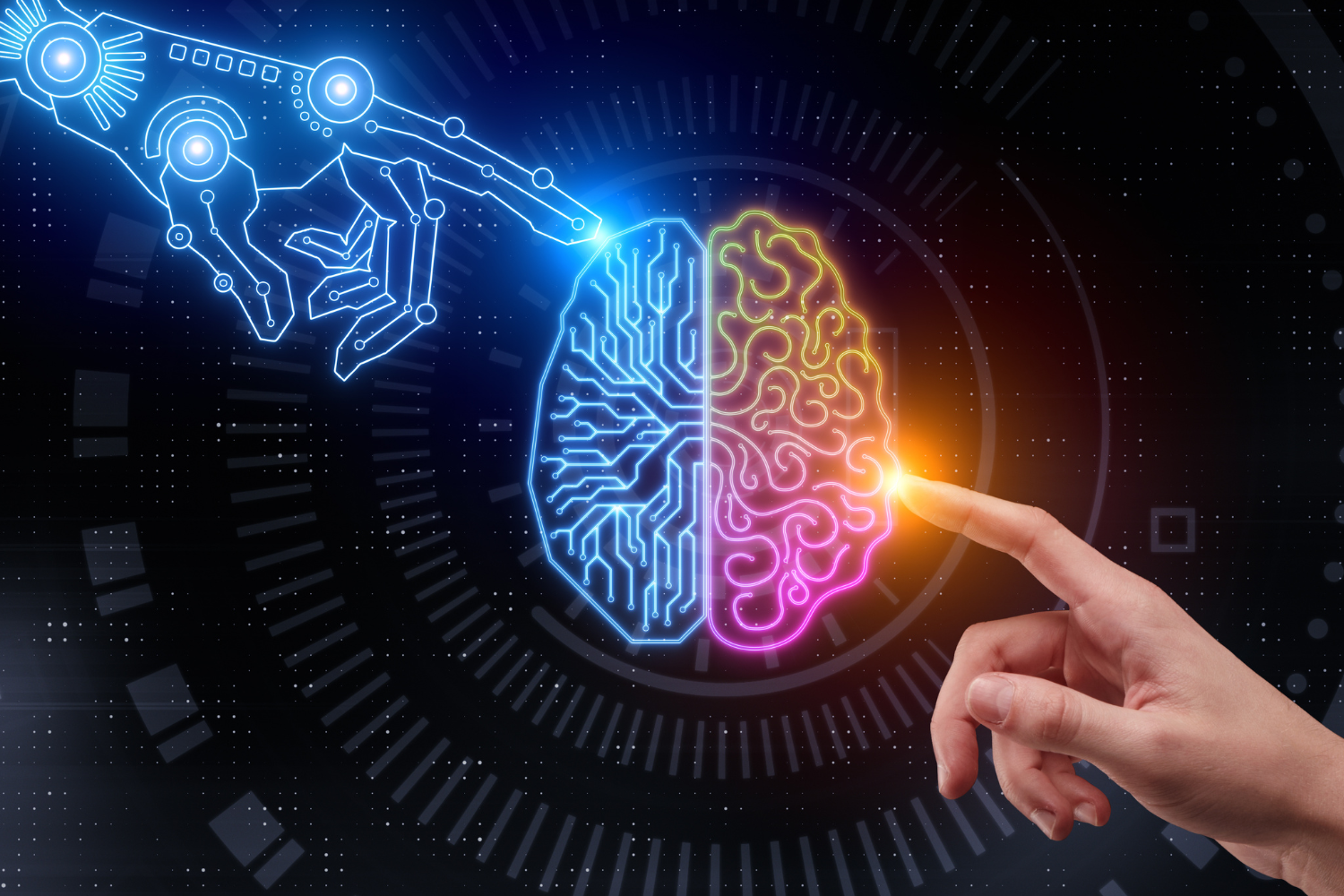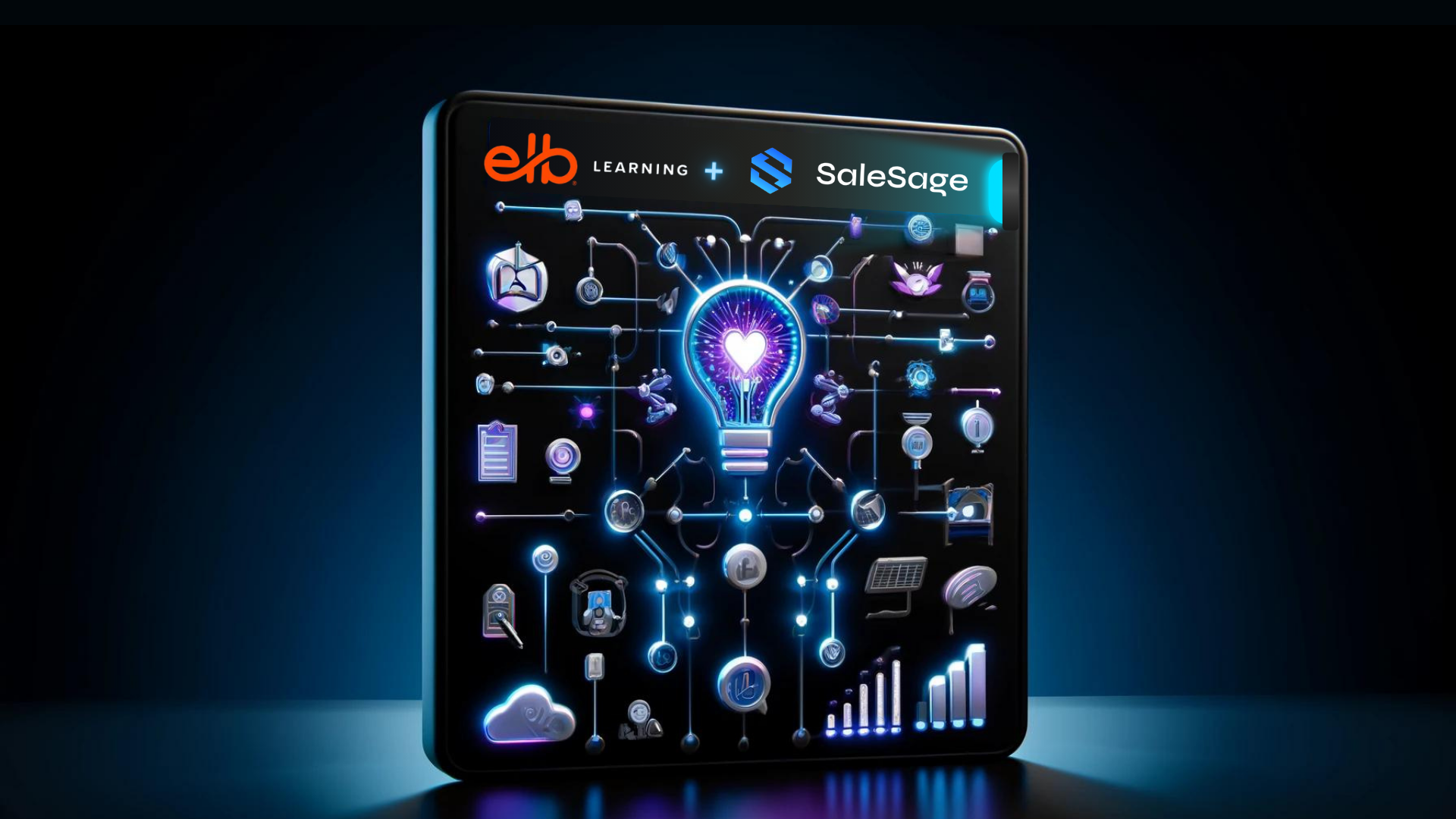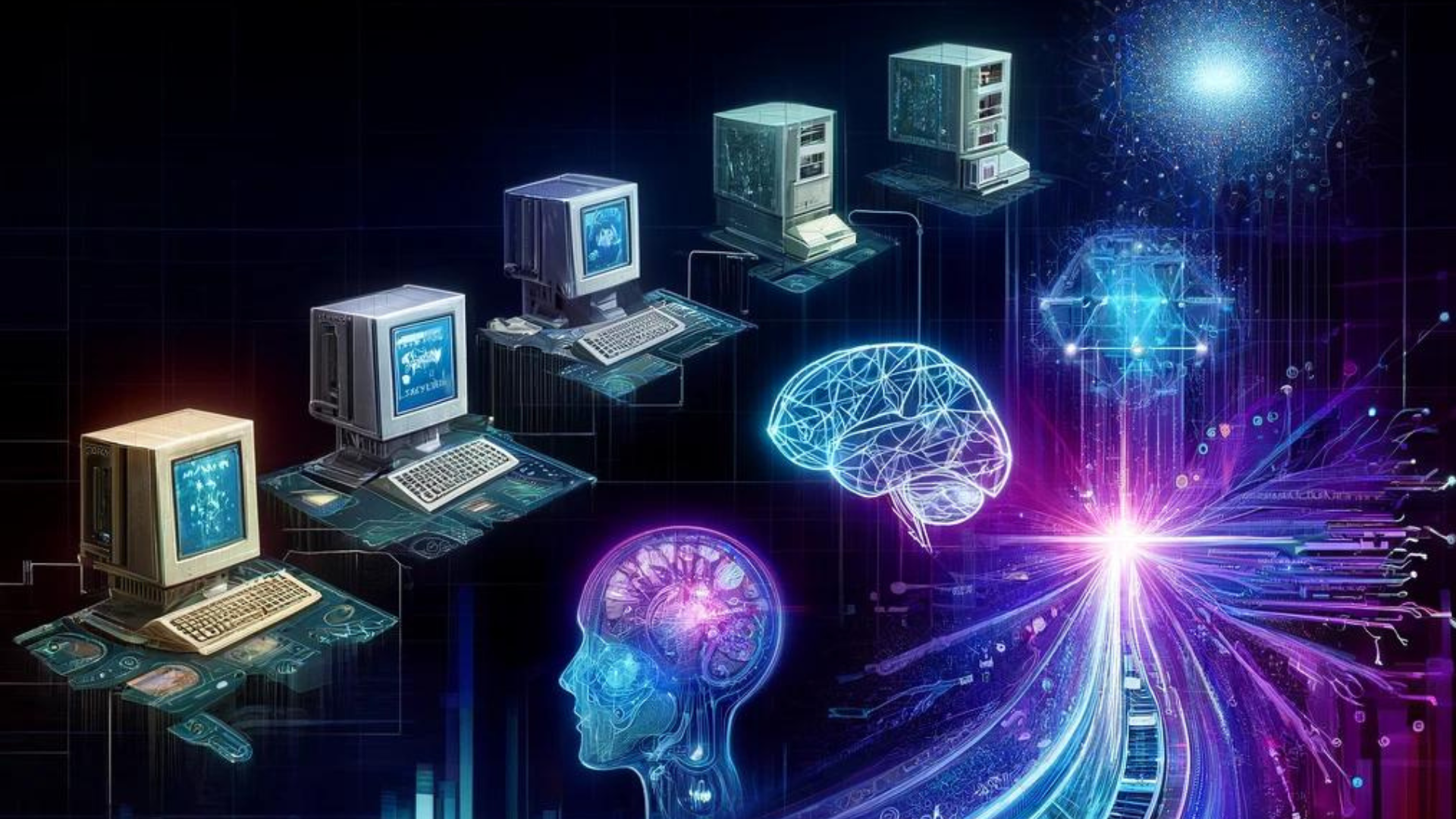Integrate artificial intelligence into talent development in five steps
This article was originally published in TD Magazine
As the workplace requires people to focus less on routine tasks that artificial intelligence automates and more on collaborating and working in teams, AI is changing hierarchical structures for talent development. According to Deloitte, more than 30 percent of HR functions are leveraging AI to become more adaptable to the process disruption that AI integration brings. That affects not only how jobs get done but also how workplace decisions are being made:
- Human-only decisions: Humans are reserved for more conceptual and less contextual decisions
- Machine-only decisions: Machines are responsible for most routine decisions
- Collaboration with humans and machines: Working together, machines and humans validate decisions
AI will have a significant impact on every job and worker—from now on, workers at every level will interact with technology to get their job done. That new way of working will enable humans to take on increasingly demanding strategic and innovative work while yielding rote tasks to intelligent machines.
The imperative is to leverage adaptable learning systems to prescribe information and interactions for workforce development in a personalized manner. AI optimizes the learning experience, drives deeper engagement, and accelerates skill accumulation—all leading to increased performance.
An AI Primer
Starting with recruitment and candidate selection, AI is supporting workforce development from onboarding to job and compliance training to leadership development. As TD functions transform their practice and become more adaptable organizations providing tailored experiences across the enterprise, it’s important to fully understand what AI technology is and is not.
AI makes dynamic decisions based on what it knows and learns. There are two types of AI: artificial narrow intelligence and artificial general intelligence.
Most current AI experiences derive from artificial narrow intelligence, which businesses use to transition from standardized to adaptable processes to increase efficiency and automation of routine tasks. Any rote or manual task, or a task that requires a minimum amount of time to complete, is a perfect target for automation using AI.
Artificial general intelligence represents super intelligence: a machine as smart as a human. It would be able to accomplish anything a human can do (and maybe more). Humanity is easily 50–100 years away from artificial general intelligence creating anything like a super-brain that will think for us and possibly replace what’s innately human about us.
The technologies that comprise AI are machine learning, natural language processing, and data. Machine learning is exactly what its name implies: machines learning automatically without being explicitly programmed.
Natural language processing technology enables the computer to understand human language, a necessary component of AI so that the computer and the human can communicate.
Data is the accelerant for AI. It’s the underlying foundation that drives machine learning and natural language processing. The algorithmic process starts with data. The relevance of your resulting algorithms depends on the quality of the data you provide.
Fundamentally, AI is software smart enough to accomplish tasks that typically require human intervention. Algorithms that simply automate something are not AI. That difference is critical—especially when you analyze vendor software—because so many vendors use the AI moniker to advertise their soft- ware’s capabilities.

What AI Means for L&D
The learning ecosystem is where people, technology, process, and measurement and analytics intersect with experience. AI is another technology in that model, yet a field of focus has emerged around measurement and analytics. Those elements become more important as you integrate intelligent software into your TD practice. It’s increasingly critical that TD teams have the capability to unlock insights from measurement and analytics that lead to meaningful perspectives on workplace performance.
However, for all its amazing potential, AI has helped uncover the fact that corporations are facing a capability crisis. There is a need to upskill and reskill millions of workers as jobs augmented by AI technology require the workforce to perform more non-routine tasks and focus more on complex problem-solving, innovation, and strategic thinking.
The most critical outcome is to ensure both the workplace and the workforce can execute on the strategies that AI technology is bringing to every business. Transforming TD to a more adaptable, AI-driven function won’t be easy. To properly test and integrate AI, TD teams need technology acumen, business acumen, and a healthy dose of patience. Any modern TD function must consider adopting AI and begin building the capabilities needed to leverage it in the TD life cycle. It makes the difference in ensuring the business is competitive in the company’s marketplace.
To integrate AI into the TD practice and deliver more immediate and meaningful learning experiences, follow these five steps:
- Increase technology understanding
- Align learning strategy with business strategy
- Motivate and shift mindsets
- Pilot and grow
- Scale and sustain
Increase technology understanding
To succeed at integrating AI to optimize the learn- ing technology ecosystem, start by developing the TD staff’s technology capabilities. It may sound contrary, but the key to a successful AI strategy is to invest more in human capital. You need a digital-literate team to operationalize a meaningful AI strategy and to train and ensure the AI systems are as productive and efficient as possible. Focus on developing the following capabilities on your team as you begin to integrate AI into the TD function.
Data strategy, governance, and policy
TD’s data strategy should support the learning strategy and at a minimum help you monitor efficiency in usage and engagement. Establish governance over processes, standards, and methodologies to ensure the TD function uses data consistently, ethically, and in bias-free conditions. The policies for using data should focus on harmonizing business and performance data to ensure the learning experiences support your audiences in achieving the desired performance outcomes.
Additionally, partner with the business to synthe- size various data elements and their correlation to corporate and government policies and regulations, employee privacy, and other compliance-related matters. A data analytics team should understand where to build and integrate with systems that collect, analyze, and visualize workplace and workforce productivity data and have the ability to understand the bottlenecks caused by large or noisy datasets.
Another key capability is creating systems to track and manage learning solutions and their resulting data using a competency or skills framework. That will help the TD team more deeply understand the critical connections between learning and performance along the competency continuum. Make sure TD staff have the capability to visualize data into actionable displays, such as digital dashboards and reporting systems that help identify talent gaps to support decisions on employee performance.
Content intelligence
A critical aspect in developing learning solutions is managing the content fire hose that L&D often creates. AI’s role in developing content is to enable workflow automation, resulting in more efficient processes and increased accuracy.
Transform manual content development practices by using AI to analyze and determine the effectiveness of enterprise content and providing actionable insights into how the TD function manages the content. For example, leveraging AI-based systems to provide real-time adaptation of content based on a learner’s interaction can provide the data needed to determine the adaptive content’s relevance and meaning.
Overall, the move to enabling intelligent content systems will help TD staff efficiently curate, create, manage, and execute learning content with minimal manual work. That enables instructional designers to focus more on the learning experience’s design rather than the content itself.
Think of intelligent content systems as also critical in managing the expansive use of content for translation, transcription, auto-tagging, and metadata (especially for reward mechanisms such as badging), grammar checking, and enterprise brand alignment. An intelligent content system will bring more automation to content development by identifying existing content across the enterprise, leading to decreased redundancy and increased accuracy. Many vendors offer intelligent content services to TD teams.
User experience
Expedite the integration of user experience design to learning design by leveraging design thinking tools and modeling the learning ecosystem collaboratively. Such tools allow for visualization of different elements of the problem, the context, or potential solutions.
Understanding what works for the end user across modalities and demographics requires the ability to visualize the interdependencies between the nodes that comprise your learning ecosystem. You can use design thinking tools for a variety of explorations in under- standing the elements and relationship in a learning ecosystem. From the end user’s needs to the complex- ity of the overall ecosystem, several tools provide an accelerated way to visualize, define, explore, and future cast various elements of the learning ecosystem. For example, an empathy map is a visualization tool that can capture what’s known about a user.
Align learning strategy with business strategy
Begin building a more adaptive TD function with AI as its foundation by enabling a deep alignment to the business strategy. An adaptive TD function connects movable metrics to be more agile with the speed of business changes. The first step is to automate as many TD processes as possible while correlating workforce development needs to understand what business drivers AI may affect. Identifying the metrics that AI affects (be sure to align organizational KPIs and leading and lagging measures) can help in evaluating business outcomes. During this process, examine:
• Where is impact needed and at what scale?
• What are the barriers to understanding insights to make changes or different investments?
• How can you align data capabilities and state-of-the-art AI technology to align with impact drivers?
TD has been successful at scale based on creating standardized processes. As work has grown exponentially more complex during the past decade, many of the standard processes created are failing to meet the rapidly evolving workplace’s needs.
In the pre-digital age work model, TD or the business could measure, optimize, and standardize processes to gain efficiency. AI is enabling more adaptive processes, which translates to faster, more flexible processes that adapt to work teams’ and individuals’ needs and that are driven by real-time data rather than a series of sequential steps. Leverage that new capability to reinvent how TD staff think about learning experience design at scale.
Motivate and shift mindsets
A healthy research and development component to TD is necessary to drive innovation. Establish a community of practice function within TD to drive connections to stakeholders across the enterprise with the purpose of shifting mindsets when it comes to the role HR and L&D play in business transformation.
Delivering learning solutions at scale across
the enterprise has become increasingly complex. The integration of digital learning during the past two decades has enabled ease of access; however, consumption and engagement are often low. To motivate the organization to move toward becom- ing a learning culture, mindsets need to shift. This practice should focus on TD’s role in performance readiness and generating and capturing collective wisdom as almost every aspect of work is redefined:
Motivate exploration to apply AI technology to corporate use cases, needs, and established metrics.
Consider how to apply AI to skills and testing systems to connect to performance readiness.
Motivate exploration to leverage AI technology to drive efficiency, personalization, and adaptability of the company’s learning systems. Training programs are more successful when employees are more engaged and seen as unique individuals. AI responds to individual needs, making employees feel like they aren’t just cogs in a giant machine.
HR and business analysts need to align around the understanding for a competency framework and have the mindset and motivation to develop competency models for incorporation and as guides for pilots and scaling efforts.
Build IT partnerships to support innovation in new HR and L&D systems to drive innovation.
Pilot and grow
Now that TD team members understand the space where technology aligns with business outcomes and are motivated and working in a connected mindset, it’s key to first pilot integration of AI technology across your practice. Results will be paramount to unlocking investments for scaling toward a more comprehensive integration of AI into the TD practice. It’s a process:
Think lean: Launch a pilot, analyze the results, and iterate accordingly. That may mean iterating the pilot or taking lessons learned to a different solution
Stack the deck: Choose a pilot that has a need and definable aspirations for business outcomes without significant complexity. The more moving parts there are, the harder the pilot will be to launch, and the effectiveness data may be fuzzier or harder to derive insight from.
Define the desired outcomes: Changes that may happen in the experience (for example, speed to competency) and the desired business outcome
Define measures of performance and effectiveness
Identify any potential confounding effects
Define the technology and learning experience
Launch and test
Analyze results in the solution, and look for evidence of transfer, individual performance changes, and team performance impact
Scale and sustain
Now that you have results from the pilot that are demonstrative of the business outcomes, consider scaling the solution. The ability to frame a pilot’s potential in terms of how TD scales it is important. It will require not just demonstrated business outcomes but a clear idea for the results of the investment’s impact.
Determine how to frame the results from the pilot into a clear value proposition tied to both performance and financial results. The human capital return on investment can be significant, and cost savings, cost avoidance, and impact on retention and continuous development all factor into the equation. Human capital value-add analysis and human capital investment impact are also extended means to frame ROI.
Take on AI
Implementing emerging technology has challenges with mindset, momentum, and scale. AI’s potential to affect people development has significant consequences along the continuum of attracting and retaining a high-performing workforce and optimizing workers’ performance. The five-step process will help accelerate TD’s ability to begin extracting value from AI for both the workforce and the business.
Mike Hruska
A technologist and design thinking practitioner, CEO of Problem Solutions.
Brandon Carson
Vice President of learning and leadership at Walmart and author of L&D’s Playbook for the Digital Age.






